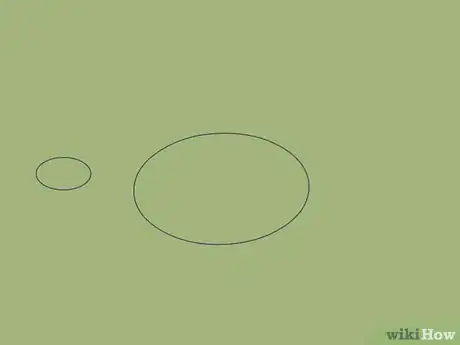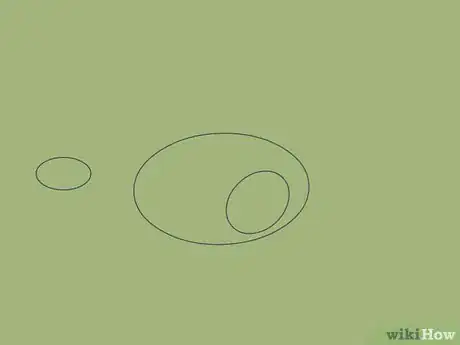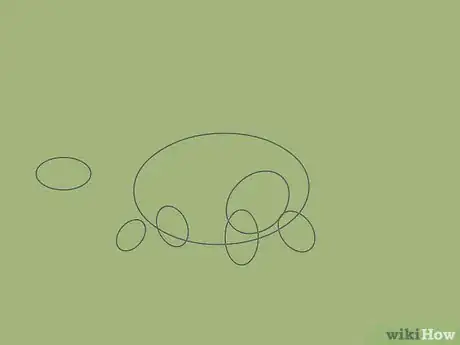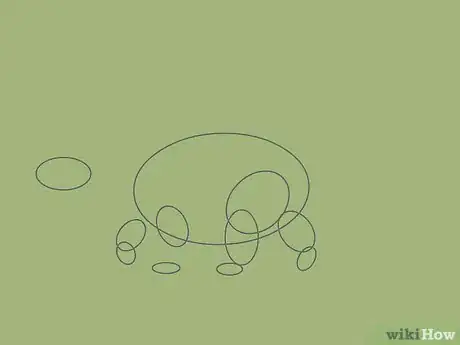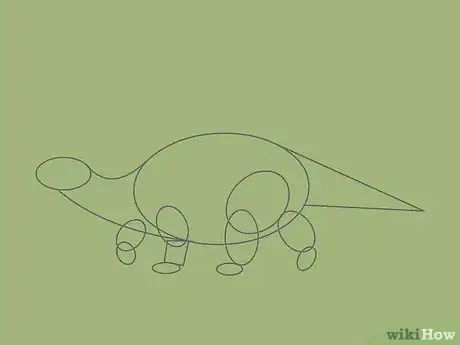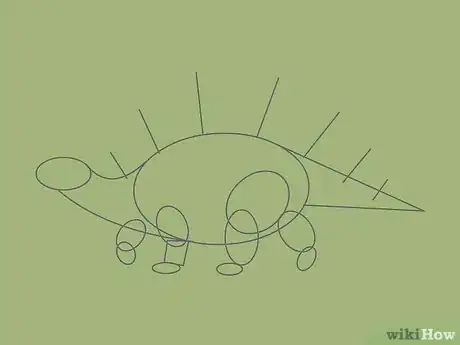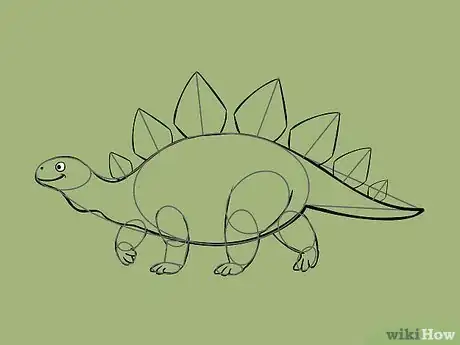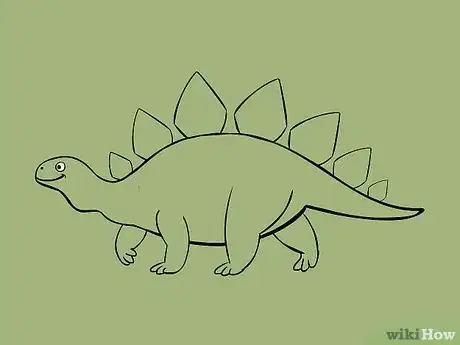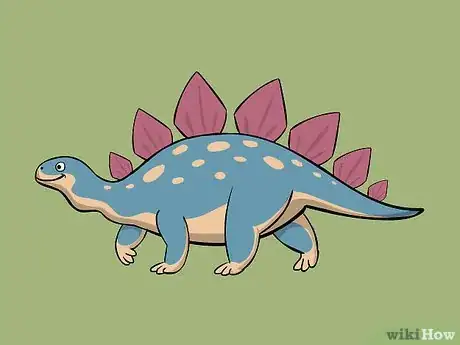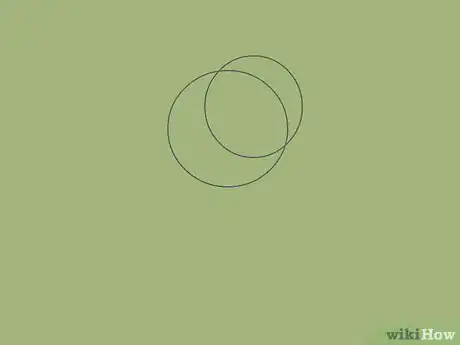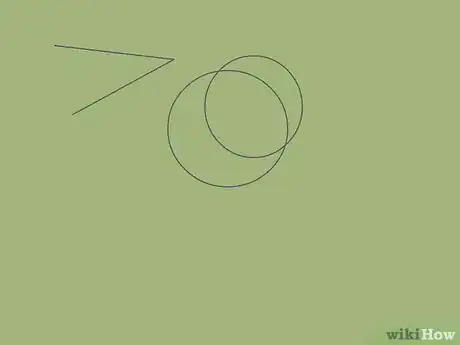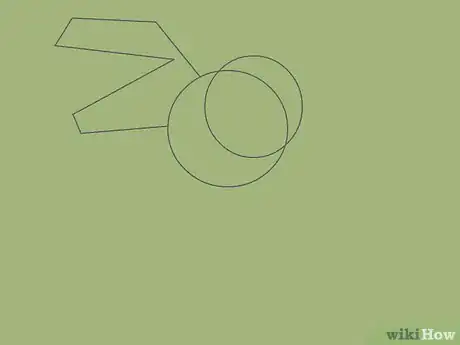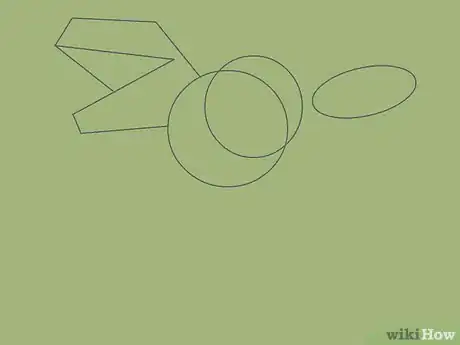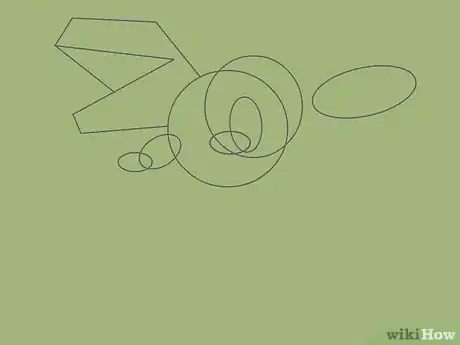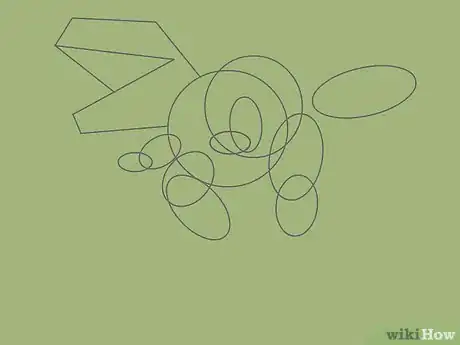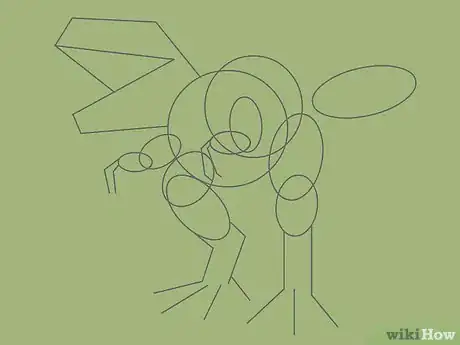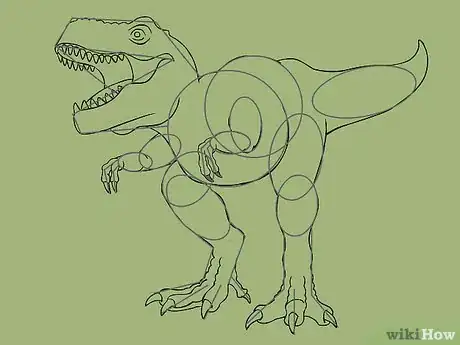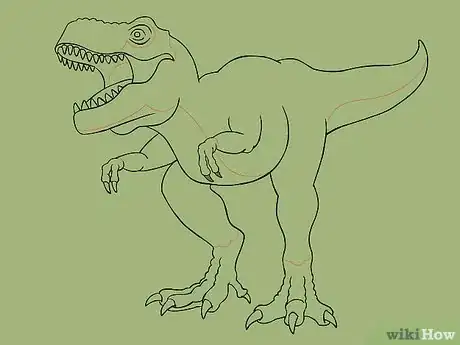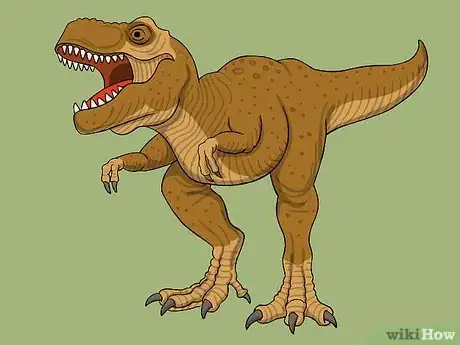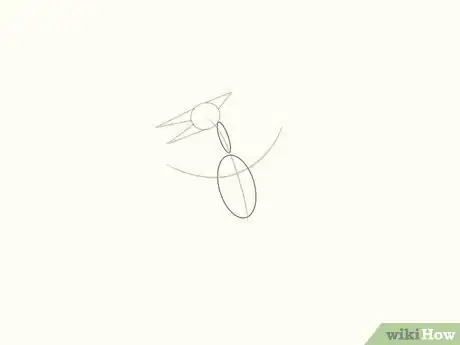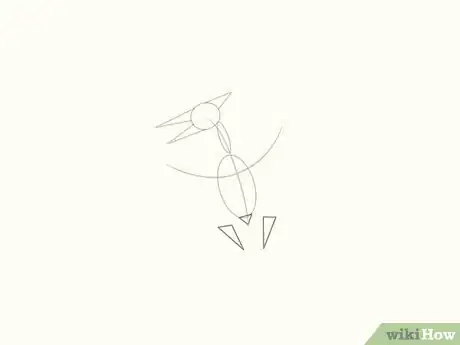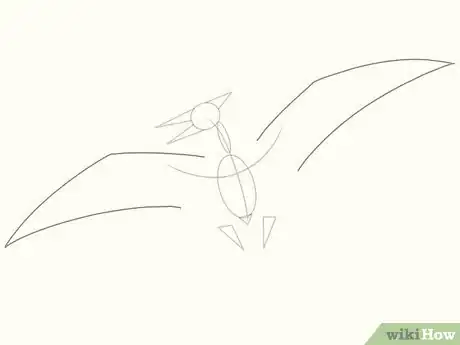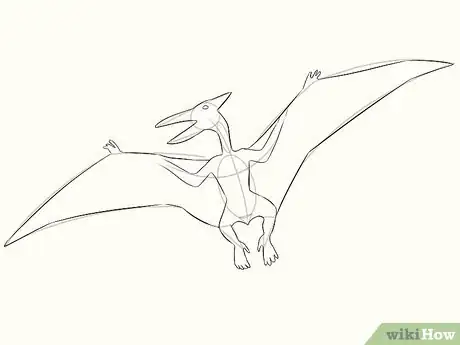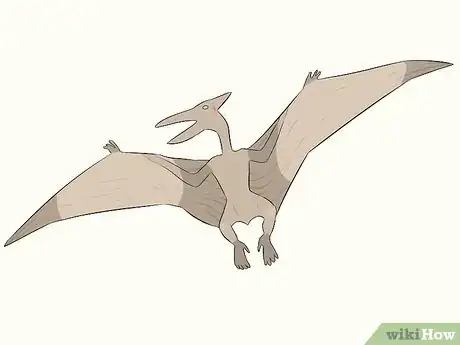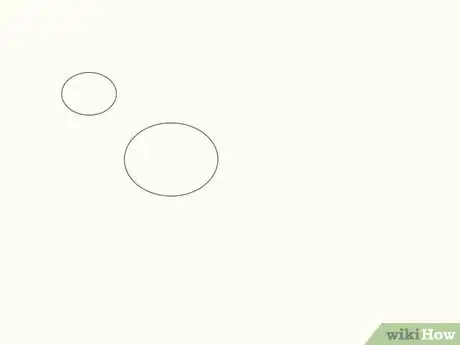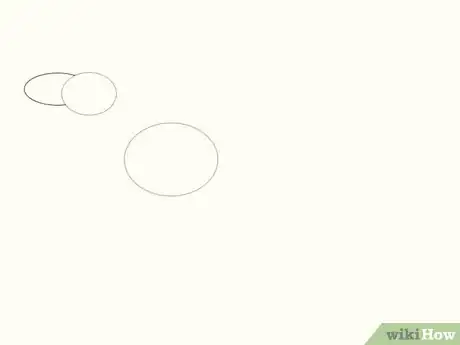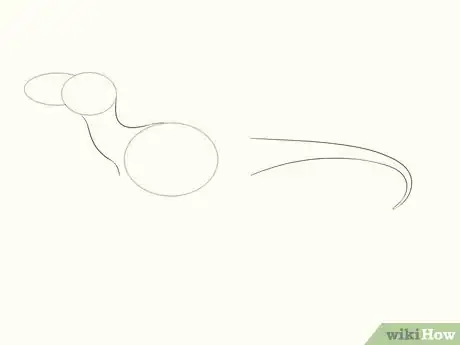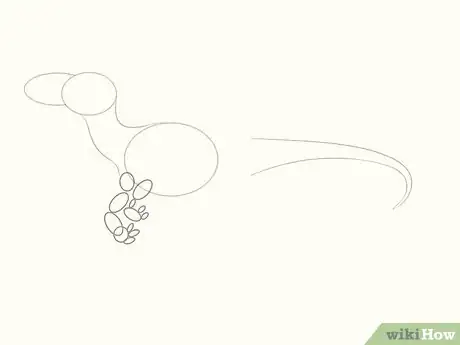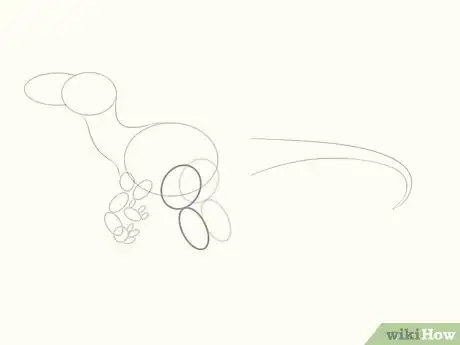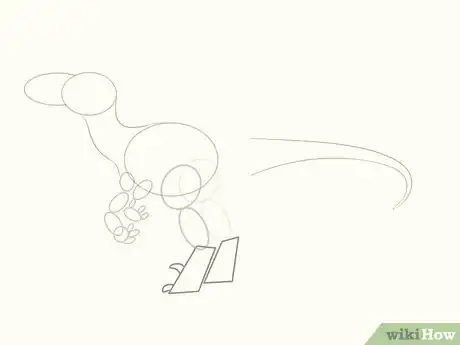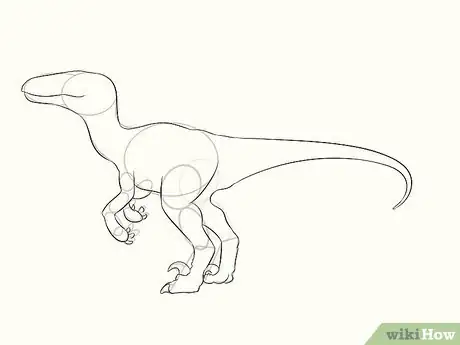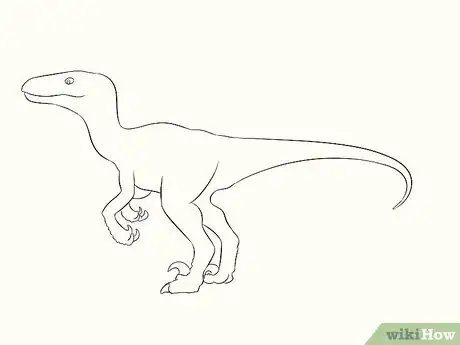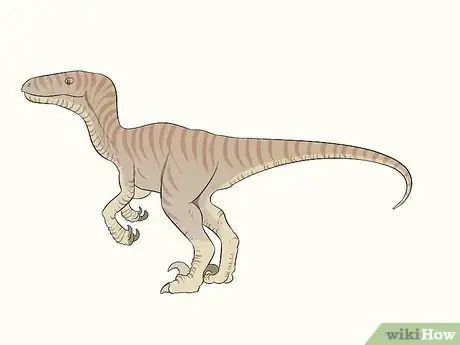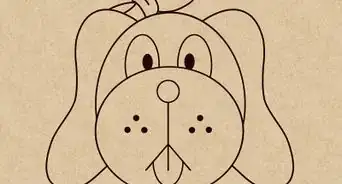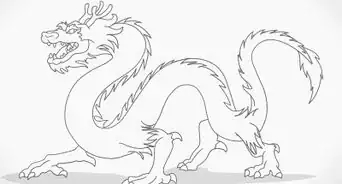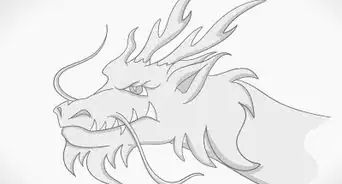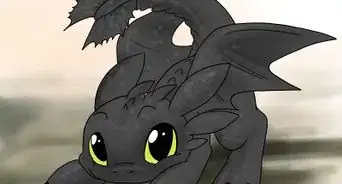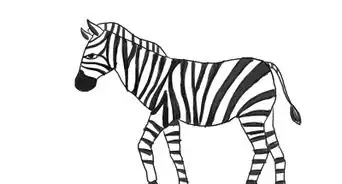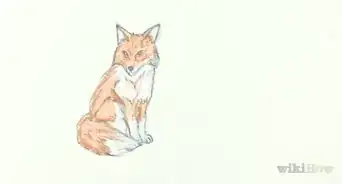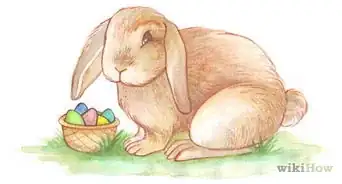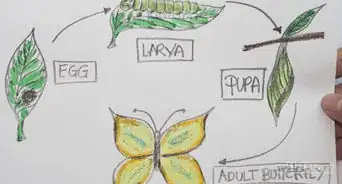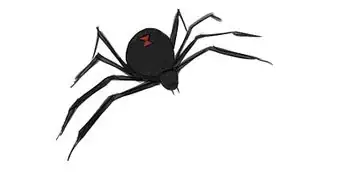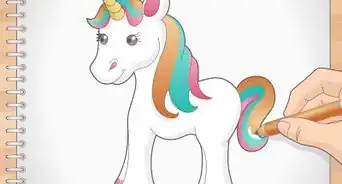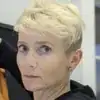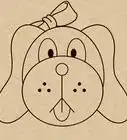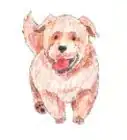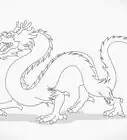This article was co-authored by Veronica Winters. Veronica Winters is a Figurative Artist who owns an online art gallery and studio in Naples, Florida. With over 20 years of experience, Veronica specializes in surreal figurative oil paintings and colored pencil drawings. In 2022, she won the Award for Distinction at the 30th Annual Colored Pencil Society of America International Exhibition. Veronica is also a published author of two art books: How to Color Like an Artist and The Colored Pencil Manual. She received her BFA in Studio Art at Oklahoma State University and her MFA in Painting at Pennsylvania State University. Veronica also studied classical drawing at the Grand Central Academy of Art and the Art Students League of New York.
There are 17 references cited in this article, which can be found at the bottom of the page.
wikiHow marks an article as reader-approved once it receives enough positive feedback. This article received 14 testimonials and 80% of readers who voted found it helpful, earning it our reader-approved status.
This article has been viewed 437,432 times.
Dinosaurs can be really easy to draw if you know how to get started. Use a pencil to draw a series of circles or ovals for each part of the dinosaur’s body. Then connect these circles with an outline. Erase the circles so that you’re left with a drawing of your dino that’s ready to be colored in. Once you get the hang of these four dinosaurs, try rearranging the shapes for different poses. Then, try using circles to create a drawing of any type of dinosaur you want!
Steps
Drawing a Stegosaurus
-
1Start by drawing horizontal ovals for the head and body. Create a small oval or circle for the stegosaurus’ head. Move over slightly to the right and sketch in a much larger oval for the body. Leave enough space for the neck; make this gap about as wide as your that first circle.
- If you want your stegosaurus to have more of a hunched spine, you can break the big circle into 2 parts. Draw a smaller circle for the front half and a larger circle for the back half.[1]
- Since you’ll be erasing all of the ovals later on, make sure you draw them in pencil. If you’re creating a digital drawing, draw these in a separate layer.
-
2Add 1 slanted oval inside the body for the hind leg. Before you start adding the legs, start by drawing a slanted oval inside the big oval. Arrange this shape so the top points to the right and the bottom points to the left. This will eventually become the stegosaurus’ hind limb, so position it towards the far-right side of the body.[2]Advertisement
-
3Make 4 small ovals beneath the body for the front and back legs. Sketch 2 ovals near the right side, towards the front of the body, and 2 near the left side, towards the back. Make these ovals vertical so that they’re taller than they are wide. So that your stegosaurus appears to be walking, angle the middle 2 ovals toward each other; these will be its left legs. Then angle the furthest-left and furthest-right ovals away from each other; these will become its right legs.
- Make sure the furthest-left circle floats away from the body. The other 3 can overlap it.
- For a dinosaur that’s not walking, just angle these all downward.[3]
-
4Create the feet by drawing 4 more little ovals below the legs. Draw 1 vertical oval beneath the front leg. Overlap it slightly so that you create a “knee.” Then draw 2 horizontal ovals beneath the middle 2 legs so that it looks like these feet are standing flat on the ground.[4] Finally, add 1 more angled oval at the back foot.
- You may need to add a small oval or rectangle to connect the top of the second leg with the foot. Angle this slightly forward so that it looks like there’s a joint here.
- Angle the oval at the back so that it looks like just the toe is touching the ground.
- These 4 ovals can be smaller than the ones you drew for the legs.
-
5Extend lines out from the body to create the neck and tail. Join the head with the body using 2 curved lines. Create a U-shaped line for the top of the neck. Add a gently-curving line below for the bottom. Extend this one from the middle of the head to the base of the body. Next, create a long, skinny triangle that extends out from the back of the body. This will be the tail.
- Keep the head and tail roughly in line with each other; don’t make one too much higher than the other.[5]
-
6Draw a series of plates along the stegosaurus’ spine. Start by drawing a few straight lines that point upward from the spine. Make the ones on the neck and tail slightly shorter and closer together than the ones along the back of the body. Then, sketch in 1 plate around each point, using the line as the center of the plate. Make each one pentagonal (i.e. 5-sided), with a triangle at the top and 2 lines angling inward that connect the triangle with the body.[6]
- Angle your lines so the plates fan out slightly.
- If you want to, you can add a second row of plates that peek out from behind this row. Just sketch in small triangles for the tops of these plates.
- If you’re making a digital drawing, create another layer for the outline of the plates.
-
7Finalize the outline of your stegosaurus by connecting the ovals. Once all of the ovals and plates are roughed in, you can finish the outline of your dinosaur’s body and legs. Outline the head, neck, body, and tail using 1 continuous line. Extend this line up and over the dino’s back, around its tail, under its belly, and up around its head and neck. Then, extend another line around the left and right sides of each leg, adding some small curved lines at the base of each leg for the toes.[7]
- If you’re working on a digital drawing, create this outline in the same layer as you did the outlines of the plates.
-
8Erase all of the ovals to reveal your main outline. Carefully erase the original ovals that you drew. Make sure that you’re only left with the outlines of the body, legs, and spine plates.
- Once you see what your outline looks like, you can add details around the face.
- Feel free to add some wrinkled texture where the legs connect to the body and where the neck curves upwards.[8]
-
9Color in your stegosaurus. Use colored pencils, markers, or crayons to add a splash of color to your dinosaur. Feel free to add any kind of pattern and texture that you want. Consider using separate colors for the underbelly and the plates to add some interest.[9]
- Look at some dinosaur books for inspiration on what colors and patterns to give your stegosaurus.
Sketching a T-Rex
-
1Start by drawing 2 overlapping circles for the body. First, draw a large circle on your page. Next, sketch another circle that overlaps the top-right side of the first. Position these pretty close together so the body remains small but has some dimension.[10]
- Make the second circle slightly smaller than the first.
-
2Create a sideways V for the T-rex’s jaws. Near the top-left side of the larger circle, sketch a sideways V that’s about as wide as the 2 circles. Make the lower line just a little bit shorter than the upper line. Think of drawing hands on a clock. Make the big hand point at 9 and the little hand point at 8 on the clock face.
- Leave a little space between the V and the circles; don’t worry about connecting them at this point.
- If you want to add more detail at this stage, make these straight lines curved.[11]
-
3Use a few straight lines to connect the jaws to the body. At the tip of the upper part of the V, draw a short line that extends upward. Create another line that goes horizontally from this point over to the right. Finally, angle another line down until it touches the body. Go to the tip of the lower part of the V and create another short line, followed by a longer horizontal line, to connect this to the body as well.[12]
- This is the beginning of your T-rex’s face.
-
4Draw another straight line from the top of the jaw to the bottom. Start this line at the tip of the top part of the jaw. Extend this down toward the middle of the bottom half of the V. Join another line inside the mouth of the V.[13]
- On a clock face, this line would be pointing toward the 4.
- Now it should look like you can see the roof of the T-rex’s mouth.
-
5Sketch a horizontal oval on the right side of the body for the tail. Make it about as wide as the body but keep it much flatter. Angle this oval slightly upwards at the back so it looks like the tail is pointing up rather than down.[14]
- Leave just a small amount of space between this circle and the body. You’ll connect them later.
-
6Add pairs of small overlapping ovals for the arms. Start the T-rex’s right arm by making a small horizontal oval below the head. Make it overlap the larger body circle just a bit. Then connect a smaller oval to the left of this one for the forearm. Next, draw a vertical oval within the smaller body circle. Attach a small horizontal oval to the bottom of this one so that it looks like this arm is bent.[15]
- Feel free to adjust the angles of these ovals to create different arm poses.
-
7Draw 2 pairs of medium-sized overlapping ovals for the hind legs. For the T-rex’s legs, you’ll create ovals that are about as thick as the tail oval but slightly shorter. Draw 1 of these toward the left side of the body, overlapping it with the base of the body. Finish it off with a second oval angled downward to create the look of a bent knee. Then make 1 more oval on the right side of the body and add a slightly smaller one below it for the other leg.[16]
- Keep the bottoms of both legs even with each other.
-
8Sketch in a few straight lines for the fingers and toes. Add 2 bent lines at the end of each arm for the claws. Then draw 2 lines down from the hind legs. Since the T-rex’s right leg (which is on the left side of the page) is positioned on an angle, use 2 lines connecting at a right angle. Use 2 straight lines for the left leg (which appears on the right side of the page). Add 3 lines for the toes, with 1 shorter line at the back of the right leg for a fourth toe.[17]
- You’re just roughing in the shapes of the digits at this step. These will serve as the foundation around which you can add more detail.
-
9Use the shapes you’ve drawn as a foundation for the outline and details. Trace around the pairs of ovals that you sketched in for the front and back legs to create an outline. Add some thickness to the straight lines to create the appearance of toes and claws. Connect the body to the neck and tail, and trace around the boxy shapes to add some definition to the head. To create realistic detail, use some squiggly lines to outline the head and mouth as well as each toe. Use smoother, curving lines as you outline the body and legs.
- First, focus on sketching in the outline of the T-rex’s body parts. Then, go on to add finer details like teeth, claws, and eyes.
- Add some wrinkles around the eyes for the eyelids.[18]
-
10Erase all the original guidelines to reveal your final sketch. Once you’ve drawn in the outline and details, go ahead and erase the ovals and straight lines you drew. Use a small kneaded eraser to get into small spots.[19]
- If you accidentally erase some of your main drawing, just pencil those details back in before you keep erasing.
- At this point, you can lightly sketch in some lines to indicate where you’ll use different colors.
-
11Color in your T-rex drawing. Use colored pencils, crayons, or markers to add some color to your illustration. Try adding some lines around the belly and the bottom of the tail for some texture. Do these parts in a lighter color, and make the upper body darker with spots to give your T-rex a leathery texture. Or have fun using your imagination to add colors and textures to your dino drawing.[20]
- Use red inside the mouth to suggest a tongue, and use a darker color toward the back of the mouth to add some dimension. It will look like your T-rex is roaring really loudly!
Rendering a Pterodactyl
-
1Begin by creating a curved cross for the spine and arms. First, draw a gently curved vertical line for the spine of your pterodactyl. Next, add a horizontal line with a slightly more pronounced curve. Orient this line like a U, but make the curve more gentle. Make this second line cross over the first like a plus-sign or cross. These will be the arms.
- Modify the angles of these curves if you want to show your dinosaur flying at a different angle.[21]
-
2Use small circles and triangles to sketch in the head and beak. Draw a small circle at the top of the spine for the head. Add an triangle to the upper-right side of this for the crown. Then, connect 2 long, skinny triangles to the left side of the head. These will become the beak.[22]
- Keep the 2 triangles parted for an open beak, or close them if you want your pterodactyl’s mouth to be closed.
-
3Stack 2 thin ovals over the spine for the neck and body. Add 1 narrow vertical oval along the upper part of the spine for the neck. Make sure this touches the head. Then, create a slightly wider and longer oval down the bottom part of the spine. Start it beneath the wings and leave a little space at the end of the spine.[23]
-
4Make 3 triangles for the legs and tail. At the bottom of the body oval you just drew, sketch a narrow triangle for the tail. This should go to the very end of the spine. On either side of the tail, add another, slightly wider triangle. Create the feet by adding 4 straight lines to the end of each leg, then connect them with upside-down U-shaped lines to give the look of webbed feet.[24]
- Angle the legs slightly outward so it looks like your pterodactyl is flying.
-
5Draw in sideways V-shapes for the wings. Starting at the end of the line you roughed in for the arms, extend a line out and slightly down. Make this line about the same length as the original arm line. Then use another line to connect the end of the wing to the ankles. Make sure you curve these lines slightly to create a more natural wing shape.[25]
- Sketch in the base of the wings by drawing a curved line between each ankle and tail.
- To add definition to the arms, draw another line under the first one you drew to suggest the thickness of the arms. Then use a few tiny ovals to suggest hands and fingers.
- To get the proportions right, make each wing about as wide as the total length of the body and beak.
-
6Finish the outline of your drawing. Trace around the outside of the wings, the body, the legs, and the head to create the outline of your pterodactyl. Use 1 line to go around the outside of the head, crown, and beak to connect them all. Similarly, use 1 line around either side of the body and legs.[26]
- Add some dots to the face and beak area for the eyes and nostrils, too.
-
7Erase the guidelines and add some color to your pterodactyl drawing. Finally, erase the original ovals and cross-shaped spine so you’re just left with the outline.[27] Use colored pencils, markers, or crayons to add some colors and textures to your pterodactyl illustration.
- Try making the wings a different color than the body if you’d like.
Illustrating a Raptor
-
1Begin by drawing 2 circles for the head and body. Create a large circle for the body. Then add a medium-sized circle near the top-right side of the body. Leave some space between these 2 so that you can fill in the neck later.[28]
- These don’t have to be perfect circles; they can be slightly flattened.
-
2Extend a U-shaped line from the head to create the snout. To draw your raptor looking backward, you’ll draw this U-shape on the left side of the head so it’s positioned over the body. Make it a sideways U with the top and bottom lines connecting to the top and bottom of the circle you drew for the head.[29]
- If you want your raptor looking ahead, place the U-shaped curve on the right side of the head.
-
3Use squiggly lines to create the neck and tail. Connect the base of the head to the body using 2 curved lines. Make the line on the left shorter and gently curved inwards. Keep the line on the right side longer so it connects to the right side of the body. Curve this one inwards and then outwards as it reaches the body. Next, create a sideways V-shape with 2 curved lines for the tail.[30]
- Start the tail at the left side of the body. Raptors have long tails, so you can make these lines about twice as wide as the body.
-
4Draw a series of ovals to make the arms and hands. For the raptor’s right arm, make 3 narrow ovals for the upper arm, forearm, and hand. Make the upper arm oval overlap with the body, and angle the other 2 outward to create a bent arm. Use 2 ovals to show the raptor’s left arm coming out from the other side. Place these ovals above the first set.[31]
- Sketch 3 lines at the end of each hand to suggest the claws.
- Make sure the ovals for the hands are positioned vertically so it looks like the raptor’s hands are pointing down.
-
5Use 2 pairs of ovals to create the legs. For each leg, start with a thick vertical oval for the upper leg. You can taper this oval so it’s thicker at the top and narrower toward the knee. Add a shorter, narrower oval at the end for the lower leg. Angle the upper legs to the left and the lower legs to the right so it looks like the raptor is bending its knees.[32]
- Make the ovals for the leg in the foreground on the left side. These can be thicker than the leg in the background which you can draw on the right side.
-
6Add trapezoids below the legs for the feet. Sketch in shapes that look somewhat like 4-sided, angled trapezoids. These just need to have a straight line on the left side and an angled line on the right side, connected by vertical lines at the top and bottom. Add a few thin lines or triangles at the base of the feet for the claws.[33]
- Draw the claws on the right side of each foot.
-
7Trace around the circular shapes to create the outline of the raptor. Use 1 line to trace around the head, body, and tail and connect these pieces together. Then draw another line around all of the arm ovals to create a realistic-looking arm and hand. Do the same for the legs so you connect the ovals and trapezoids.[34]
- Add a jagged line for the mouth.
- Sketch in an oval for the eye. Add a vertical line inside for the pupil.
- Draw some small triangles at the end of the hands and feet for the claws.
-
8Erase the original shapes and sketch in some details. Once you’ve completed the main outline, go in with an eraser to remove the ovals and other shapes you sketched in for the foundation of your raptor.[35] With all of the unnecessary lines erased, feel free to add some more details to your raptor.
- Try creating wrinkles and muscle definition with squiggly lines. Add these around the center of each limb and on either side of the eye.
- Draw triangles along the raptor’s body for stripes.
-
9Color in your raptor drawing. Add some color with markers, colored pencils, or crayons. Feel free to use a variety of colors to give your raptor some texture and personality.[36]
- Look online for pictures of raptors if you need some inspiration.
Expert Q&A
-
QuestionCan I really sketch out a dinosaur just with some circles and triangles?
 Veronica WintersVeronica Winters is a Figurative Artist who owns an online art gallery and studio in Naples, Florida. With over 20 years of experience, Veronica specializes in surreal figurative oil paintings and colored pencil drawings. In 2022, she won the Award for Distinction at the 30th Annual Colored Pencil Society of America International Exhibition. Veronica is also a published author of two art books: How to Color Like an Artist and The Colored Pencil Manual. She received her BFA in Studio Art at Oklahoma State University and her MFA in Painting at Pennsylvania State University. Veronica also studied classical drawing at the Grand Central Academy of Art and the Art Students League of New York.
Veronica WintersVeronica Winters is a Figurative Artist who owns an online art gallery and studio in Naples, Florida. With over 20 years of experience, Veronica specializes in surreal figurative oil paintings and colored pencil drawings. In 2022, she won the Award for Distinction at the 30th Annual Colored Pencil Society of America International Exhibition. Veronica is also a published author of two art books: How to Color Like an Artist and The Colored Pencil Manual. She received her BFA in Studio Art at Oklahoma State University and her MFA in Painting at Pennsylvania State University. Veronica also studied classical drawing at the Grand Central Academy of Art and the Art Students League of New York.
Figurative Artist Yes! Circles and triangles are the foundation for the composition of many different illustrations. For example, the use of triangles and circles was very popular during the Renaissance.
Yes! Circles and triangles are the foundation for the composition of many different illustrations. For example, the use of triangles and circles was very popular during the Renaissance. -
QuestionIf I want to get better at drawing dinosaurs, what should I do?
 Veronica WintersVeronica Winters is a Figurative Artist who owns an online art gallery and studio in Naples, Florida. With over 20 years of experience, Veronica specializes in surreal figurative oil paintings and colored pencil drawings. In 2022, she won the Award for Distinction at the 30th Annual Colored Pencil Society of America International Exhibition. Veronica is also a published author of two art books: How to Color Like an Artist and The Colored Pencil Manual. She received her BFA in Studio Art at Oklahoma State University and her MFA in Painting at Pennsylvania State University. Veronica also studied classical drawing at the Grand Central Academy of Art and the Art Students League of New York.
Veronica WintersVeronica Winters is a Figurative Artist who owns an online art gallery and studio in Naples, Florida. With over 20 years of experience, Veronica specializes in surreal figurative oil paintings and colored pencil drawings. In 2022, she won the Award for Distinction at the 30th Annual Colored Pencil Society of America International Exhibition. Veronica is also a published author of two art books: How to Color Like an Artist and The Colored Pencil Manual. She received her BFA in Studio Art at Oklahoma State University and her MFA in Painting at Pennsylvania State University. Veronica also studied classical drawing at the Grand Central Academy of Art and the Art Students League of New York.
Figurative Artist Subject, color, composition, contrast and creativity or unique vision are all important elements in creating art. But if you want to focus on one thing, it's your composition. Besides a common rule of thirds, study art for other ways to compose the image.
Subject, color, composition, contrast and creativity or unique vision are all important elements in creating art. But if you want to focus on one thing, it's your composition. Besides a common rule of thirds, study art for other ways to compose the image. -
QuestionWhat's one way I can add some fun texture to my dinosaur?
 Veronica WintersVeronica Winters is a Figurative Artist who owns an online art gallery and studio in Naples, Florida. With over 20 years of experience, Veronica specializes in surreal figurative oil paintings and colored pencil drawings. In 2022, she won the Award for Distinction at the 30th Annual Colored Pencil Society of America International Exhibition. Veronica is also a published author of two art books: How to Color Like an Artist and The Colored Pencil Manual. She received her BFA in Studio Art at Oklahoma State University and her MFA in Painting at Pennsylvania State University. Veronica also studied classical drawing at the Grand Central Academy of Art and the Art Students League of New York.
Veronica WintersVeronica Winters is a Figurative Artist who owns an online art gallery and studio in Naples, Florida. With over 20 years of experience, Veronica specializes in surreal figurative oil paintings and colored pencil drawings. In 2022, she won the Award for Distinction at the 30th Annual Colored Pencil Society of America International Exhibition. Veronica is also a published author of two art books: How to Color Like an Artist and The Colored Pencil Manual. She received her BFA in Studio Art at Oklahoma State University and her MFA in Painting at Pennsylvania State University. Veronica also studied classical drawing at the Grand Central Academy of Art and the Art Students League of New York.
Figurative Artist Once you've colored in your drawing, take out a Tombow mono eraser and use different strokes to create special textures or effects that add realism or creativity to your illustration.
Once you've colored in your drawing, take out a Tombow mono eraser and use different strokes to create special textures or effects that add realism or creativity to your illustration.
Things You'll Need
- Paper
- Pencil
- Pencil sharpener
- Eraser
- Colored pencils, crayons, or markers
References
- ↑ https://how2drawanimals.com/8-animals/47-draw-stegosaurus.html
- ↑ https://how2drawanimals.com/8-animals/47-draw-stegosaurus.html
- ↑ https://how2drawanimals.com/8-animals/47-draw-stegosaurus.html
- ↑ https://how2drawanimals.com/8-animals/47-draw-stegosaurus.html?start=2
- ↑ https://how2drawanimals.com/8-animals/47-draw-stegosaurus.html?start=2
- ↑ https://how2drawanimals.com/8-animals/47-draw-stegosaurus.html?start=2
- ↑ https://how2drawanimals.com/8-animals/47-draw-stegosaurus.html?start=2
- ↑ https://how2drawanimals.com/8-animals/47-draw-stegosaurus.html?start=2
- ↑ https://youtu.be/o_L8b14z4ls?t=293
- ↑ https://how2drawanimals.com/8-animals/424-draw-t-rex-roaring.html
- ↑ https://youtu.be/28qqnOX_Als?t=98
- ↑ https://how2drawanimals.com/8-animals/424-draw-t-rex-roaring.html
- ↑ https://how2drawanimals.com/8-animals/424-draw-t-rex-roaring.html
- ↑ https://how2drawanimals.com/8-animals/424-draw-t-rex-roaring.html
- ↑ https://youtu.be/28qqnOX_Als?t=529
- ↑ https://how2drawanimals.com/8-animals/424-draw-t-rex-roaring.html
- ↑ https://youtu.be/28qqnOX_Als?t=329
- ↑ https://youtu.be/28qqnOX_Als?t=31
- ↑ https://youtu.be/28qqnOX_Als?t=627
- ↑ https://how2drawanimals.com/8-animals/424-draw-t-rex-roaring.html
- ↑ https://www.artforkidshub.com/how-to-draw-a-pterodactyl/
- ↑ http://www.how-to-draw-cartoons-online.com/pterodactyl.html
- ↑ http://www.hellokids.com/c_12334/drawing-for-kids/drawing-lessons-for-kids/how-to-draw-dinosaurs/how-to-draw-a-pterodactyl
- ↑ http://www.hellokids.com/c_12334/drawing-for-kids/drawing-lessons-for-kids/how-to-draw-dinosaurs/how-to-draw-a-pterodactyl
- ↑ http://www.how-to-draw-cartoons-online.com/pterodactyl.html
- ↑ https://www.arttutor.com/blog/201801/how-start-drawing-using-simple-shapes
- ↑ https://youtu.be/ZHQY-J483tY?t=211
- ↑ http://www.hellokids.com/c_26116/drawing-for-kids/drawing-tutorials-step-by-step/dinosaurs/how-to-draw-a-raptor
- ↑ http://www.hellokids.com/c_26116/drawing-for-kids/drawing-tutorials-step-by-step/dinosaurs/how-to-draw-a-raptor
- ↑ http://www.hellokids.com/c_26116/drawing-for-kids/drawing-tutorials-step-by-step/dinosaurs/how-to-draw-a-raptor
- ↑ https://youtu.be/JaCmlwoLWQ0?t=59
- ↑ https://youtu.be/JaCmlwoLWQ0?t=91
- ↑ http://www.hellokids.com/c_26116/drawing-for-kids/drawing-tutorials-step-by-step/dinosaurs/how-to-draw-a-raptor
- ↑ http://www.hellokids.com/c_26116/drawing-for-kids/drawing-tutorials-step-by-step/dinosaurs/how-to-draw-a-raptor
- ↑ http://www.hellokids.com/c_26116/drawing-for-kids/drawing-tutorials-step-by-step/dinosaurs/how-to-draw-a-raptor
- ↑ http://www.hellokids.com/c_26116/drawing-for-kids/drawing-tutorials-step-by-step/dinosaurs/how-to-draw-a-raptor
About This Article
To draw a t-rex, start by drawing a circle before adding a second, smaller circle overlapping the first. For the mouth, draw an anti-clockwise rotated "V" on the left-hand side and join it to the circles with lines. Then, create a horizontal oval for the tail and draw a vertical oval in the smaller circle for the thighs of the forelegs. Overlap the ovals with another oval for the lower part of the legs, then repeat for the hind legs. Finally, add in detail for the face and toes, erase unnecessary lines, and color in your picture. For tips on how to draw a raptor or a pterodactyl, read on!
